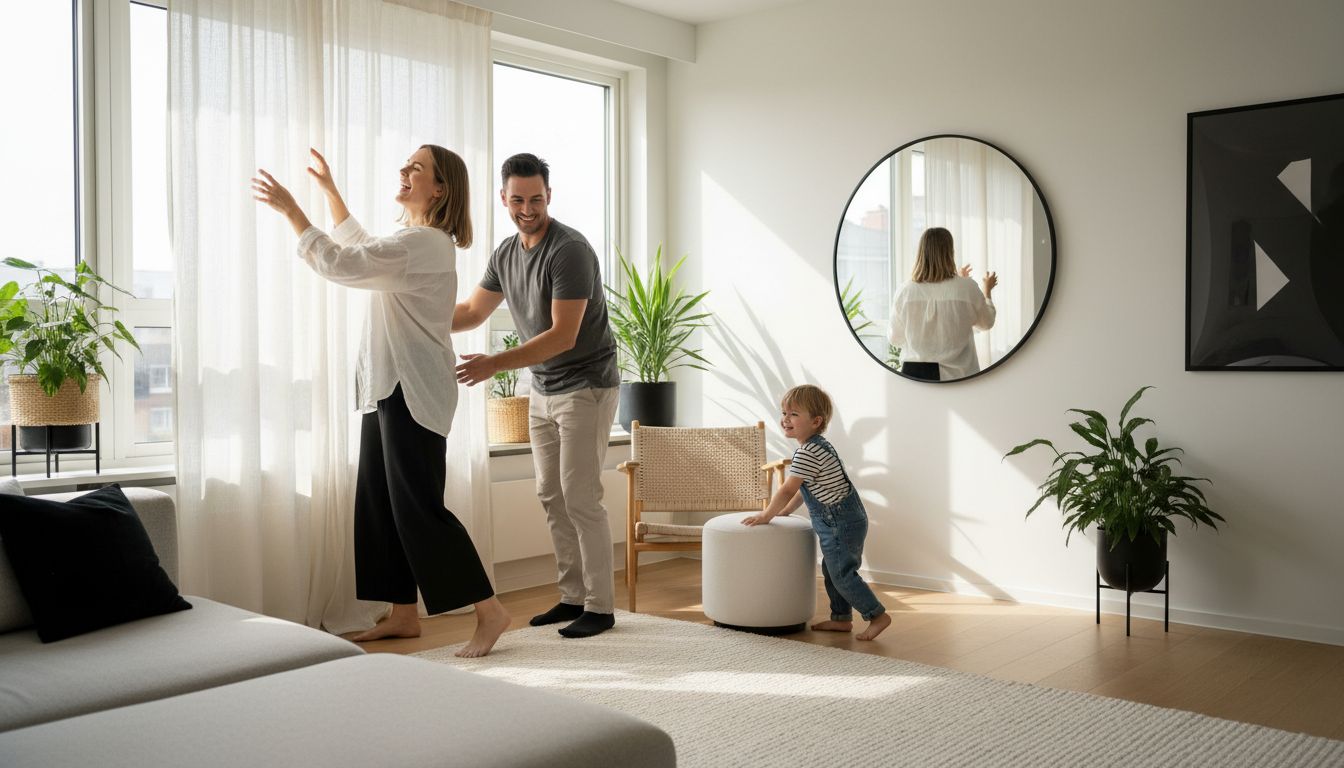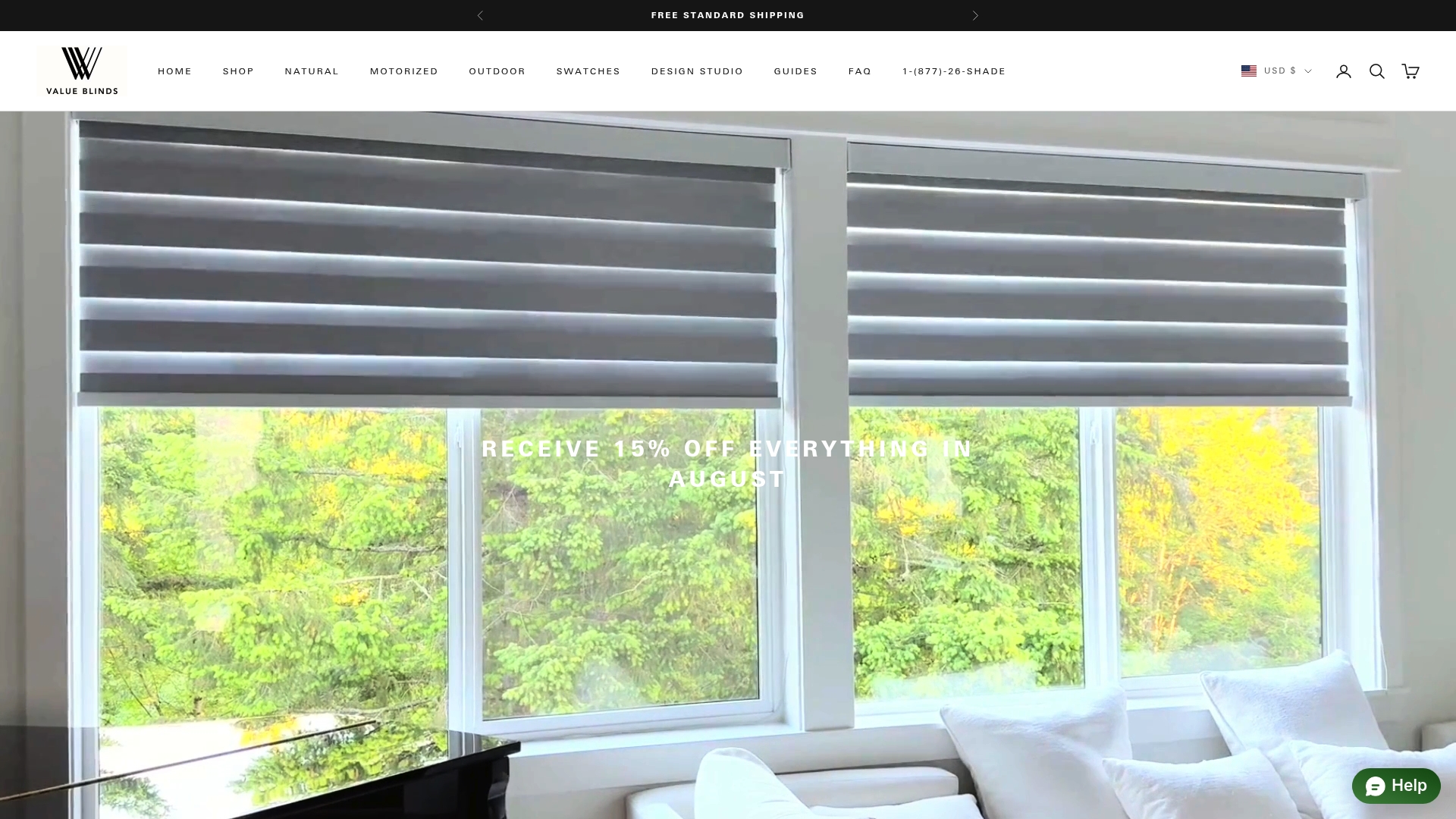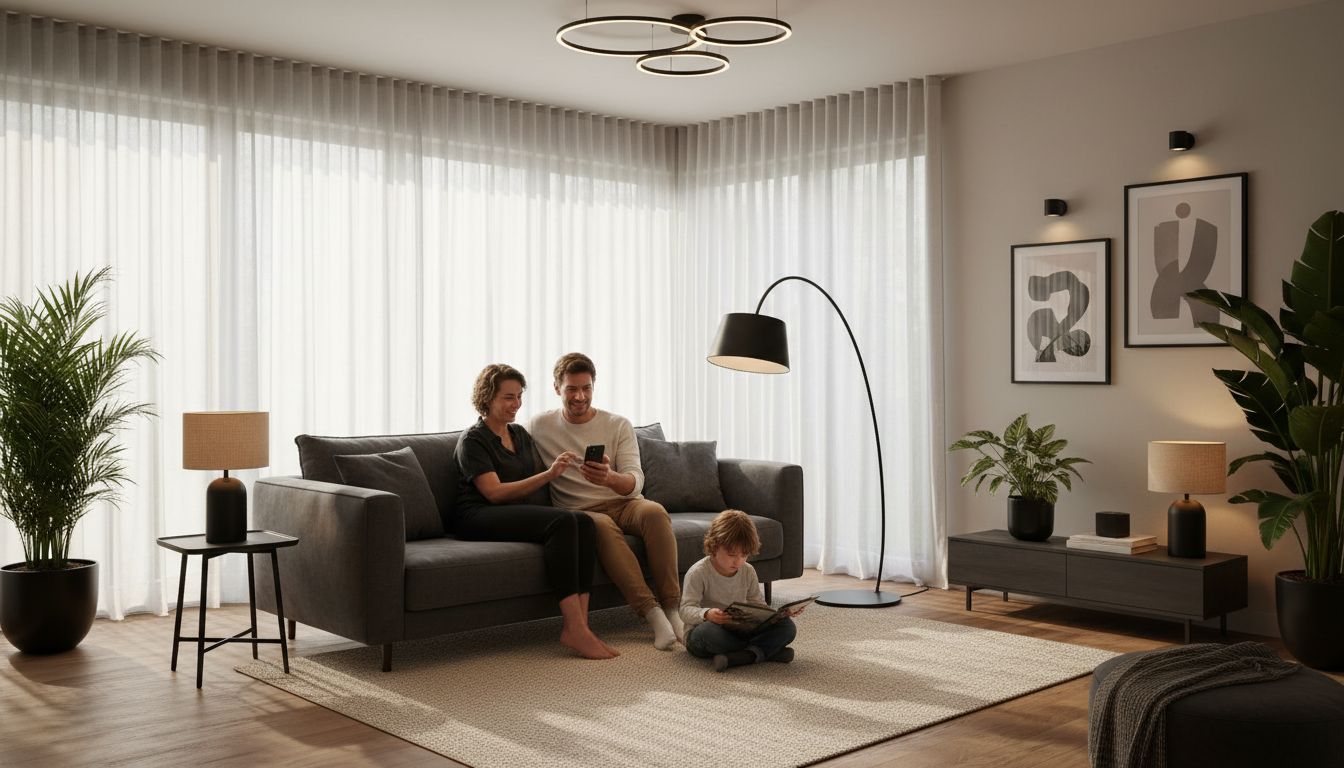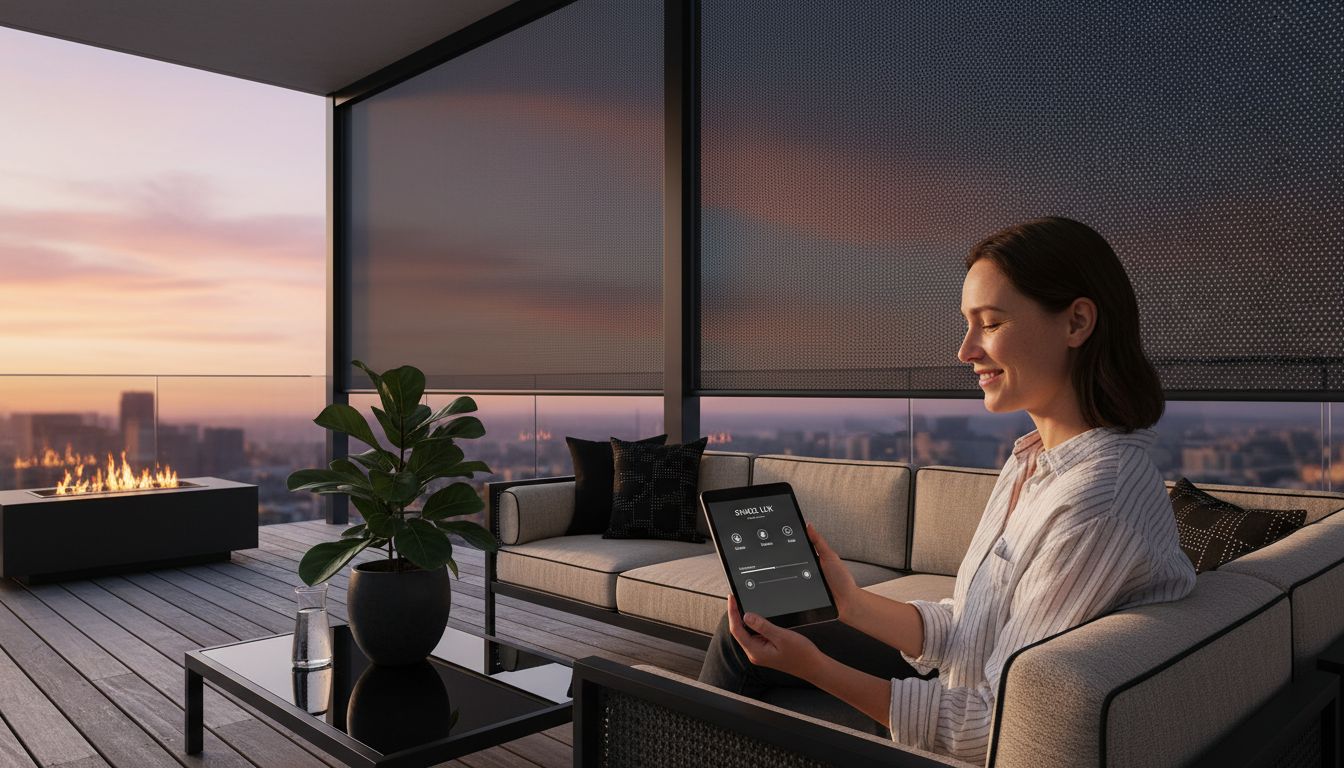
7 Expert Tips for Maximizing Natural Light at Home
Bright, sun-filled rooms can lift your mood and make any space feel larger. Yet, many homes lose up to 30 percent of their natural light simply because of overlooked design choices. The right strategies allow you to welcome more daylight without sacrificing comfort or privacy. With a few thoughtful changes, you can take control of sunlight, reduce energy use, and create a home that looks and feels inviting from morning to evening.
Table of Contents
- 1. Choose Sheer and Light-Filtering Window Treatments
- 2. Install Blinds That Allow for Flexible Light Control
- 3. Use Mirrors and Reflective Surfaces Strategically
- 4. Opt for Light Colors in Wall Paint and Decor
- 5. Trim Exterior Obstacles Blocking Windows
- 6. Incorporate Day-Night and Motorized Shade Options
- 7. Arrange Furniture to Avoid Blocking Sunlight
Quick Summary
| Takeaway | Explanation |
|---|---|
| 1. Choose sheer, light-filtering treatments | These treatments maximize natural light while maintaining privacy, creating a bright, welcoming space. |
| 2. Install adjustable blinds for flexibility | Horizontal blinds allow precise control of sunlight, helping to manage glare and enhance comfort during different times of day. |
| 3. Use mirrors to amplify light | Positioning mirrors opposite windows effectively redirects natural light deeper into your interiors, brightening dark areas. |
| 4. Opt for light colors in walls and decor | Light shades reflect and amplify natural illumination, contributing to a spacious and energizing interior atmosphere. |
| 5. Maintain exterior landscaping for better light | Regularly prune trees and shrubs to prevent them from blocking sunlight, ensuring your home remains bright and inviting. |
1. Choose Sheer and Light-Filtering Window Treatments
Transforming your home’s lighting environment starts with selecting the right window treatments. Sheer and light filtering options offer a smart solution for homeowners seeking to maximize natural illumination without compromising privacy.
According to the U.S. Department of Energy, window treatments like sheer curtains and light filtering shades provide an intelligent approach to managing sunlight. These materials diffuse incoming light, reducing harsh glare while still allowing significant brightness to enter your living spaces.
The magic of these treatments lies in their unique construction. Lightweight and translucent fabrics soften incoming sunlight, creating a gentle ambient glow that eliminates sharp shadows and intense brightness. When strategically selected, they can transform harsh midday light into a warm, inviting atmosphere.
When choosing these window treatments, consider several key factors:
- Fabric Weight: Opt for lightweight materials that allow maximum light penetration
- Color Selection: Lighter colors reflect more light and create a brighter interior
- Mounting Position: Install curtain rods wider and higher than window frames to maximize light exposure
Implementing this strategy not only enhances your home’s aesthetic but also provides practical benefits. You will enjoy improved natural lighting, reduced eye strain, and a more welcoming interior environment. Understanding Light Filtering Window Treatments can help you make informed decisions about creating the perfect illuminated space.
2. Install Blinds That Allow for Flexible Light Control
Controlling natural light is an art form that requires the right window treatments. Horizontal blinds and adjustable shades offer homeowners unprecedented flexibility in managing sunlight throughout the day.
According to the U.S. Department of Energy, horizontal blinds provide exceptional light management capabilities. Tilting mechanisms allow you to direct sunlight precisely where you want it, reducing glare while maintaining visibility.
The strategic advantage of adjustable blinds goes beyond aesthetic appeal. These window treatments help you create dynamic lighting environments that adapt to changing times of day. By simply adjusting slat angles, you can soften harsh midday sunlight or maximize morning and afternoon illumination.
When selecting flexible light control blinds, consider these key features:
- Adjustable Slat Angles: Enables precise light redirection
- Material Transparency: Choose materials that filter light effectively
- Mounting Flexibility: Install to maximize light management potential
Additionally, Hunter Douglas Architectural notes that these window treatments can significantly reduce energy consumption by managing thermal gain. You will not only create a beautifully lit space but also potentially lower your cooling and heating costs.
With the right blinds, you transform your windows from passive barriers into dynamic light management systems that enhance both comfort and energy efficiency.
3. Use Mirrors and Reflective Surfaces Strategically
Mirrors are powerful design tools that can transform how natural light moves through your living spaces. By understanding their reflective potential, you can dramatically enhance the brightness and perceived size of any room.
SA Decor & Design highlights a brilliant technique for maximizing light: positioning mirrors directly opposite windows. This strategic placement acts like a natural light amplifier, bouncing incoming sunlight deeper into your interior and creating a more luminous environment.
Light Reflection Physics work in your favor when you place reflective surfaces thoughtfully. Mirrors do not just duplicate light they multiply and distribute it, transforming dark corners into bright zones and making smaller spaces feel more expansive.
When implementing this strategy, consider these key placement techniques:
- Window Opposite Placement: Directly reflect incoming sunlight
- Large Mirror Surfaces: Choose substantial mirrors for maximum light distribution
- Metallic Accents: Incorporate reflective metals like brass or chrome
- Glass Furniture: Use transparent or mirrored furniture pieces
The U.S. Department of Energy suggests that reflective surfaces can also contribute to energy efficiency. By strategically managing light reflection, you not only brighten your space but potentially reduce artificial lighting needs.
Remember that mirror placement is an art form. Experiment with angles, sizes, and positions to discover the most effective light enhancement for your unique space.
4. Opt for Light Colors in Wall Paint and Decor
The colors surrounding you can dramatically transform how natural light interacts with your living spaces. Light colored walls and decor act like invisible light multipliers creating brighter more welcoming environments.
The International Journal of Low Carbon Technologies reveals a fascinating scientific approach to maximizing light through color selection. Reflective surfaces essentially bounce sunlight throughout your rooms creating a luminous atmosphere that feels both spacious and energizing.
Color science demonstrates that lighter shades like soft whites soft creams and pale neutrals have exceptional light reflecting properties. These colors do not just passively exist they actively work to distribute and amplify natural illumination entering your space.
When selecting colors for maximum light enhancement consider these strategic approaches:
- White and Off White Tones: Highest light reflection potential
- Pale Neutrals: Soft beiges creams and light grays
- Metallic Accents: Add shine and additional light reflection
- Glossy Finishes: Increase light bounce compared to matte surfaces
The Malaysian Journal of Sustainable Environment emphasizes that these color choices contribute to visual comfort and potential energy savings. By thoughtfully selecting your interior color palette you transform your home into a naturally illuminated sanctuary that feels both beautiful and intelligent.
5. Trim Exterior Obstacles Blocking Windows
Natural light can be significantly impeded by overgrown landscaping that creates unexpected barriers around your home. Understanding how exterior vegetation impacts window illumination is key to maximizing your indoor brightness.
The U.S. Department of Energy recommends proactively managing exterior elements that might obstruct natural light entry. Strategic landscaping involves thoughtful pruning and maintenance to ensure sunlight can freely penetrate your windows.
Trees shrubs and climbing plants might look beautiful but can dramatically reduce the amount of sunlight entering your living spaces. These green barriers block precious natural illumination creating darker interior environments that feel closed and less inviting.
When addressing exterior window obstacles consider these strategic approaches:
- Annual Pruning Schedule: Trim trees and shrubs regularly
- Selective Plant Positioning: Choose lower growing plants near windows
- Vertical Clearance: Maintain at least 3 feet between plants and window frames
- Light Canopy Trimming: Remove dense branches blocking direct sunlight
SA Decor & Design emphasizes that thoughtful exterior maintenance can transform your home’s interior lighting. By creating clear pathways for sunlight you not only brighten your living spaces but also potentially reduce energy consumption related to artificial lighting.
6. Incorporate Day-Night and Motorized Shade Options
Motorized window treatments represent the cutting edge of light management technology for modern homes. These intelligent systems transform how we interact with natural illumination throughout the day.
The U.S. Department of Energy highlights the remarkable potential of programmable shading solutions. Smart shade technology allows homeowners to automatically adjust window coverings based on sunlight intensity time of day and personal preferences creating dynamic living environments.
These advanced window treatments go beyond simple convenience. They actively optimize natural light creating environments that adapt seamlessly to changing external conditions. Imagine shades that gradually open with morning sunlight or close during peak afternoon heat protecting your interior from intense glare.
When considering motorized shade options explore these strategic features:
- Automated Scheduling: Program shade adjustments throughout the day
- Light Sensors: Automatic responses to sunlight intensity
Hunter Douglas Architectural emphasizes that these systems are not just about comfort but also contribute to significant energy savings. By intelligently managing solar heat gain and natural light you can reduce both cooling costs and reliance on artificial lighting.
7. Arrange Furniture to Avoid Blocking Sunlight
The placement of furniture can dramatically impact how natural light flows through your living spaces. Strategic positioning transforms rooms from dark confined areas into bright inviting environments.
SA Decor & Design emphasizes the critical role of furniture arrangement in managing interior illumination. Light Pathways become essential when considering how each piece of furniture interacts with incoming sunlight.
Large bulky items like bookcases sofas and cabinets can unintentionally create shadows and block precious natural light. By rethinking your furniture layout you can create clear channels for sunlight to penetrate deeper into your living spaces creating a more open and luminous environment.
When redesigning your room consider these strategic furniture placement techniques:
- Low Profile Furniture: Position shorter pieces near windows
- Float Furniture Away: Create space between furniture and window walls
- Use Transparent Elements: Incorporate glass tables or open frame designs
- Create Light Corridors: Establish clear paths for sunlight transmission
The U.S. Department of Energy recommends thinking of your furniture as light management tools. By carefully considering each pieces location you can maximize natural illumination reduce reliance on artificial lighting and create more energy efficient living spaces.
Below is a comprehensive table summarizing strategies and considerations for enhancing natural light in homes as discussed throughout the article.
| Strategy | Implementation | Expected Results |
|---|---|---|
| Sheer and Light-Filtering Treatments | Use lightweight, translucent fabrics; choose light colors; mount rods higher and wider | Enhanced natural light, reduced glare, inviting atmosphere |
| Install Blinds for Light Control | Opt for adjustable slats for precise sunlight direction; use transparent materials | Dynamic lighting, reduced energy consumption |
| Use Mirrors Strategically | Position mirrors opposite windows; use large mirrors and metallic accents | Amplified light, brighter and more spacious rooms |
| Light Colors in Decor | Select whites, off-whites, pale neutrals; incorporate glossy finishes | Increased light reflection, visual comfort |
| Trim Exterior Obstacles | Prune regularly; select low plants; maintain vertical clearance | Unobstructed light entry, reduced artificial lighting needs |
| Incorporate Motorized Shades | Use automated scheduling and light sensors | Optimized light, energy savings |
| Strategic Furniture Placement | Use low-profile furniture; float items away from windows | Improved light pathways, energy efficiency |
Brighten Your Home with Custom Window Treatments from Value Blinds
Struggling to maximize natural light without sacrificing comfort or style is a common challenge for many homeowners. This article highlighted key strategies like selecting sheer and light filtering window treatments, using blinds for flexible light control, and even arranging furniture thoughtfully to enhance sunlight flow. If your goal is to create a welcoming, radiant atmosphere while minimizing glare and improving energy efficiency, tailored window coverings are the answer.
Discover how Value Blinds can help you transform your space with our wide range of customizable solutions. From Best Sellers featuring light-filtering blinds to innovative motorized and cordless options, our products make managing natural light both simple and stylish.

Take control of your home’s lighting today and enjoy a brighter, more comfortable living space. Visit Value Blinds to explore our collection and use our easy design tools, free swatches, and expert support to find the perfect window treatment that meets your needs now.
Frequently Asked Questions
How can I choose sheer and light-filtering window treatments effectively?
To choose sheer and light-filtering window treatments, opt for lightweight materials in lighter colors. Install them wider and higher than the window frame to maximize natural light entry, enhancing brightness while maintaining privacy.
What features should I look for in blinds that offer flexible light control?
When selecting blinds for flexible light control, prioritize adjustable slat angles and materials that effectively filter light. Ensure that the mounting allows for maximum adjustability to adapt to different light conditions throughout the day.
What is the best way to use mirrors for maximizing natural light?
Position mirrors directly opposite windows to reflect incoming sunlight deeper into your space. Aim to use large mirrors to maximize their light distribution effect, helping brightened areas feel larger and more inviting.
How should I select paint colors to enhance natural light in my home?
Choose light colors for walls and decor, such as soft whites, creams, or pale neutrals, as they have excellent light-reflecting properties. Consider using glossy finishes instead of matte to increase light bounce in your spaces.
What landscaping tips can help improve natural light around my windows?
Maintain a clear area around your windows by trimming trees and shrubs that obstruct sunlight. Aim for an annual pruning schedule to keep vegetation at least three feet from window frames, ensuring maximum light penetration.
How can motorized shades optimize natural light in my home?
Motorized shades can be programmed to adjust automatically based on sunlight intensity or time of day. Explore options that allow you to create a dynamic light environment and potentially reduce reliance on artificial lighting.







